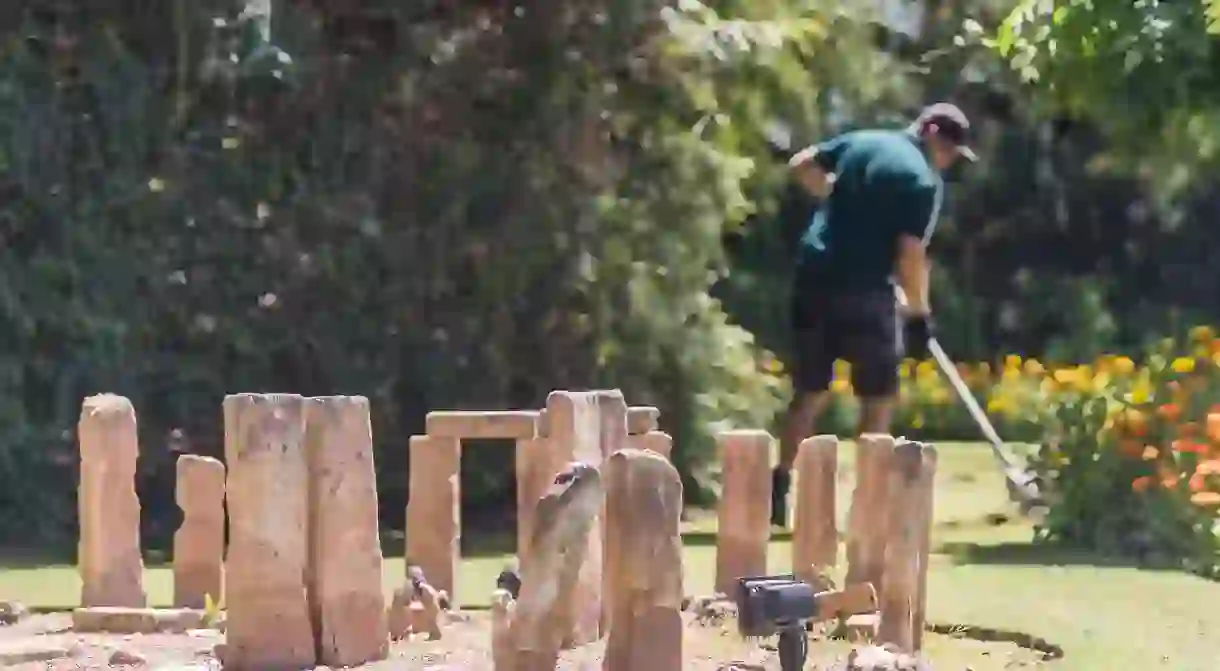The Top Attractions to Visit in Gungahlin, Canberra

In the far north of Canberra, Australia, the Gungahlin region has seen more and more visitors of late – and if you find yourself to be one of them, you won’t be short of things to see and do. From a dinosaur museum to a wildlife sanctuary, here are the top attractions to check out in the Gungahlin area.
Until recently, Gungahlin, a region was made up of bush and farmland, but suburban blocks have sprung up to supply housing to the growing city. Despite its urban development, the Gungahlin area has kept hold of its past by preserving indigenous and settler heritage sites and protecting nature reserves. The recently built light rail has also connected Gungahlin with the centre of the city and brought more visitors to the area. If you’re one such visitor, check out this list of Gungahlin’s top things to see and do.
Cockington Green Gardens

The hamlet of Cockington is like any other English village: there are old cottages, shops, a cricket green and gardens. The only difference is that Cockington Green will make you feel like a giant! Tiny, exquisitely detailed miniature scenes are set among beautiful gardens. Opened in 1979, the green has been a staple of many Canberra childhoods and continues to delight. In 1998, an international section was introduced, drawing inspiration from the many embassies found in the capital. Check out the impressive Ukrainian church, which took over 3,000 hours to create, and peek into the workshop to see new models being built. During your visit, no trip to Cockington Green is complete without a ride on the child-sized steam train.
Gubur Dhaura
In the language of the Ngunnawal people, gubur dhaura means ochre ground, and indigenous people used to gather here to dig up ochre for use in ceremonies and for trading. In more recent times, European settlers mined the area for pipe clay, which was used for whitewashing and brick making. When the suburb of Franklin was being built, this area was reserved as a park due to its rich cultural history. Signs and artwork tell the story of this place, and parts of old machinery have been repurposed in the fences and displays. This is a great spot to learn about some local history, have a picnic and enjoy the views over Canberra.
National Dinosaur Museum

Let your jurassic fantasies run wild as you wander between towering replicas of T-Rex, raptors and triceratops on display at the National Dinosaur Museum. It hosts Australia’s largest permanent collection of dinosaur and other prehistoric fossils. There are interactive displays showing the biodiversity of prehistoric species, educational murals and collections of skulls, skeletons and minerals. Animatronic models will delight, or maybe terrify, the kids as you explore the museum’s collection. The dinosaur museum hosts tours, birthday parties and educational trips.
Mulligans Flat Woodland Sanctuary

The wildlife sanctuary at Mulligans Flat is one of the best places in Canberra to spot endangered native Australian animals. A fox-proof fence has allowed scientists to reintroduce species that had all but disappeared from the area in a safe and secure environment. Ramble through the reserve during the day, and spot wallabies lounging in the shade or echidnas shuffling around looking for ants. Many of the more elusive species are most active at night, and the reserve runs twilight tours for those hoping to catch a glimpse of the rare eastern bettong or spotted-tail quolls.
Download the Mulligans Flat app for free audio guides of the looped walking tracks that take you through grassy woodland, wetlands and areas full of birdlife.
Gold Creek Village
There’s plenty to explore at Gold Creek Village, from specialty shops and galleries to teahouses and restaurants. Children will think they’ve made it to Willy Wonka’s factory in the Lolly Shop with its dazzling variety of old-fashioned sweets and newfangled treats. Adults will appreciate the fine art on display at Aarwun Gallery, which features classic Australian pieces by Norman Lindsay, as well as intricate indigenous dot paintings and exhibitions by contemporary artists. Visitors can also feed the birds at the walk-in bird aviary and see rare frogs, snakes and other creatures at the reptile zoo.
Learn about the historic past of the village by visiting the old schoolhouse and church buildings (which date back to the late 17th century) at the centre of the Gold Creek complex.













